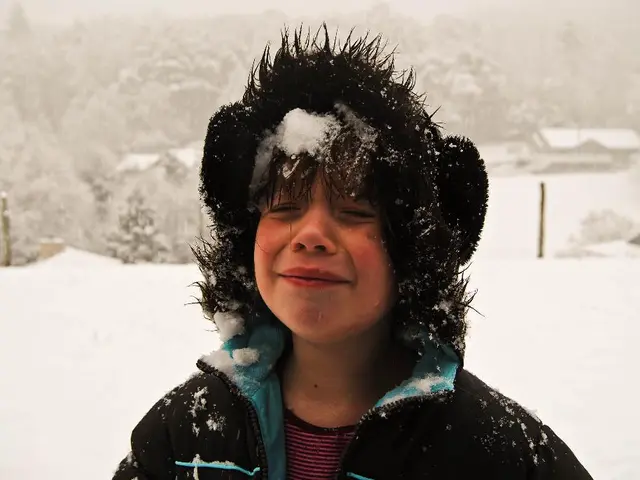Exploring Eye Language: Communication Beyond Verbal Speech
In a groundbreaking study published in the journal Royal Society Open Science, researchers have delved into the intricacies of eye movements and their role in social communication. The study, originally published by Cosmos under the title "The science of speaking with your eyes," suggests that the context of eye movements is crucial in understanding and responding to others during social interaction.
Led by Dr Nathan Caruana, a cognitive neuroscientist at Australia's Flinders University, the study involved 137 participants who were asked to complete a virtual activity to decide if a simulated avatar was inspecting or requesting help to retrieve an object. The only clues provided to make this decision were the virtual partner's gaze, which jumped between the participant and the object in various sequences and durations.
The findings of the study reveal that the sequence and context of eye movements strongly influence communicative behavior in social interactions. Eye movements communicate cognitive and emotional states beyond just attention focus. For example, direct gaze enhances perception of approach-oriented emotions (anger, joy) while averted gaze aligns with avoidance-oriented emotions (fear, sadness).
Moreover, metrics such as fixation duration, saccades, and pupil size carry emotional cues, and their temporal patterns reveal complex emotional states and cognitive processes that influence interaction dynamics. The sequence of gaze shifts and accompanying nonverbal behaviors (approaching movements, gestures, facial expressions) contribute to expressing and interpreting intentions and social preferences, such as who a speaker wants to address or avoid, thereby shaping conversational flow and social rapport.
Real-time eye movement patterns can indicate attention allocation and engagement, essential in cooperative, supportive, or competitive social contexts. Understanding these subtle signals better could lead to technologies and training that help people connect more clearly and confidently, potentially improving non-verbal communication training in high-pressure settings like sports, defense, and noisy workplaces.
The study could also aid in improving human-to-human communication, particularly for those who rely heavily on visual cues, such as those who are hearing-impaired or autistic. Furthermore, the findings could potentially enable researchers to design virtual avatars and social robots that have natural and intuitive interactions with humans.
Incorporating naturalistic gaze sequences, timing, and context-dependent eye movements into social robots and avatars can enhance their ability to convey emotions, intentions, and social cues effectively, making interactions feel more genuine and intuitive. Combining gaze behavior with movement dynamics (e.g., approach or retreat), facial expressions, and gestures can improve robots' or avatars’ emotional expressivity and social presence, enabling nuanced communication such as turn-taking, signaling preferences, or topic control.
Monitoring and adapting to users' eye movement patterns in real-time enables robots/avatars to respond appropriately to cognitive-affective states, increasing engagement and facilitating smoother interactions. Advanced computational methods like topological analysis of eye movement patterns can improve emotion recognition accuracy in robots, allowing better interpretation of subtle social signals and personalization of responses.
In summary, understanding and replicating the temporal sequence and social context of eye movements are crucial for developing social robots and virtual avatars that can interact naturally and effectively with humans by leveraging nonverbal communication cues central to social behavior.
- The role of eye movements in social communication, as detailed in the study by Dr Nathan Caruana, extends beyond just focus and conveys cognitive and emotional states.
- In light of this research, incorporating naturalistic gaze sequences, timing, and context-dependent eye movements into social robots and avatars can enhance their ability to convey emotions, intentions, and social cues effectively.
- Advanced technology such as artificial intelligence and data-and-cloud-computing can improve emotion recognition accuracy in robots, allowing better interpretation of subtle social signals and personalization of responses.
- By understanding and replicating the temporal sequence and social context of eye movements, researchers could potentially design virtual avatars and social robots that have natural and intuitive interactions with humans, impacting areas like health-and-wellness, fitness-and-exercise, mental-health, and even cybersecurity.




